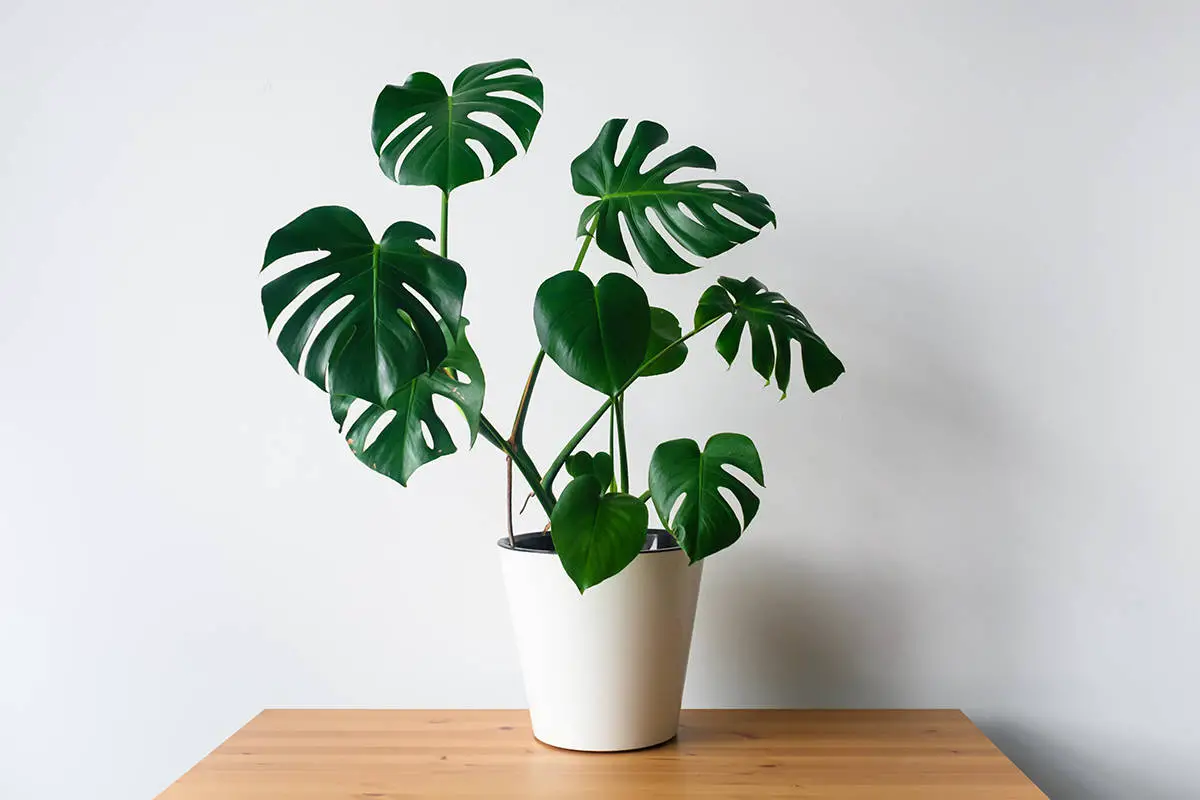Ever noticed those trendy green leaves with unique splits and holes that seem to pop up in every chic coffee shop, stylish living room, or Instagram feed?
That’s the Monstera, also known as the Swiss Cheese Plant. Beyond its eye-catching appearance, this plant hides a world of fun and interesting facts that make it a favorite among plant lovers. From its ability to purify the air to the way it’s become a symbol of interior design, the Monstera’s story is as fascinating as its distinctive looks.
Let’s dive into some of the most intriguing tidbits about this beloved houseplant.
Table of Contents
- Origin In The Rainforests
- Symbol Of Longevity And Health
- Distinctive Split Leaves
- Rapid Growth Under Optimal Conditions
- Climbing Nature
- Air Purifying Qualities
- Easy Propagation
- Variegated Varieties Are Highly Prized
- Edible Fruit Bearing
- Long Lifespan
- Symbolism In Art And Culture
- Wide Range Of Species
- Tolerance For Low Light
- Requires High Humidity
- A Subject Of Scientific Study
Origin In The Rainforests
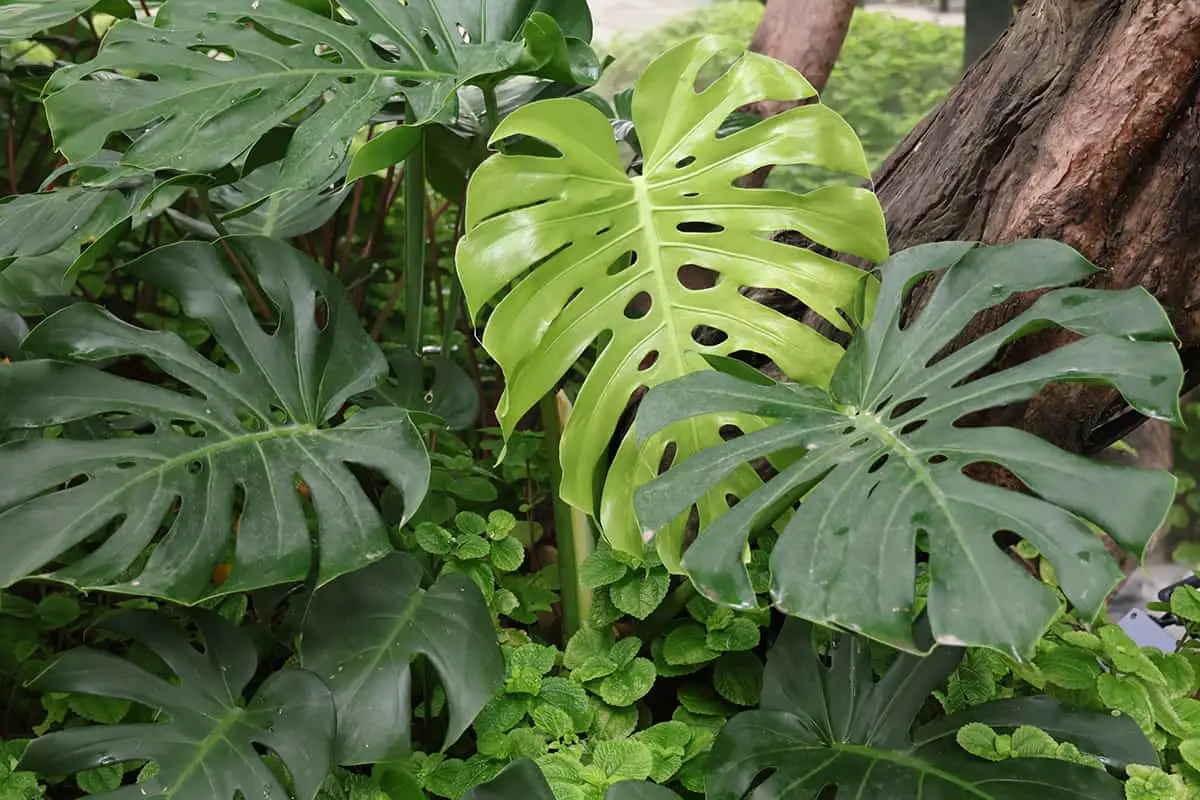
Monstera deliciosa, often known as the Swiss cheese plant, has its roots deep in the rainforests. Originating from Central America, it thrives in dense, humid conditions. You can find this tropical plant extending from southern Mexico to Panama. Its natural habitat is filled with rich and diverse wildlife.
Its growth begins on the forest floor, where light is scarce. In the search for sunlight, Monstera deliciosa climbs up trees. It uses its strong aerial roots to grasp and ascend. As a natural climber, it reaches towards the forest canopy.
The leaves of Monstera are glossy and have a unique appearance. Young leaves start solid and later develop characteristic splits and holes. These changes allow rain and sunlight to reach lower leaves. This adaptation is perfect for survival in thick forests.
In its rainforest home, Monstera deliciosa plays a role in the ecosystem. It provides cover for smaller plants and animals. Its fruit, known for its sweet taste, is eaten by wildlife. This can aid in the dispersion of the plant’s seeds.
Symbol Of Longevity And Health
Monstera plants have come to symbolize longevity and health. They are admired for their air purification properties. It’s said that they can remove toxins from your indoor environment. By doing this, they contribute to a healthier living space.
Your Monstera’s vibrant green leaves are a sign of its robust health. These plants require minimal care, thriving in indirect sunlight and humid conditions. Their ease of care makes them longstanding companions in homes and offices.
Ancient cultures recognized the Monstera as a symbol of long life and prosperity. Today, they are popular gifts. They communicate wishes for a recipient’s enduring health and well-being.
When you care for a Monstera, you’re tending to more than just a plant. You’re nourishing a tradition that values growth and endurance.
Distinctive Split Leaves
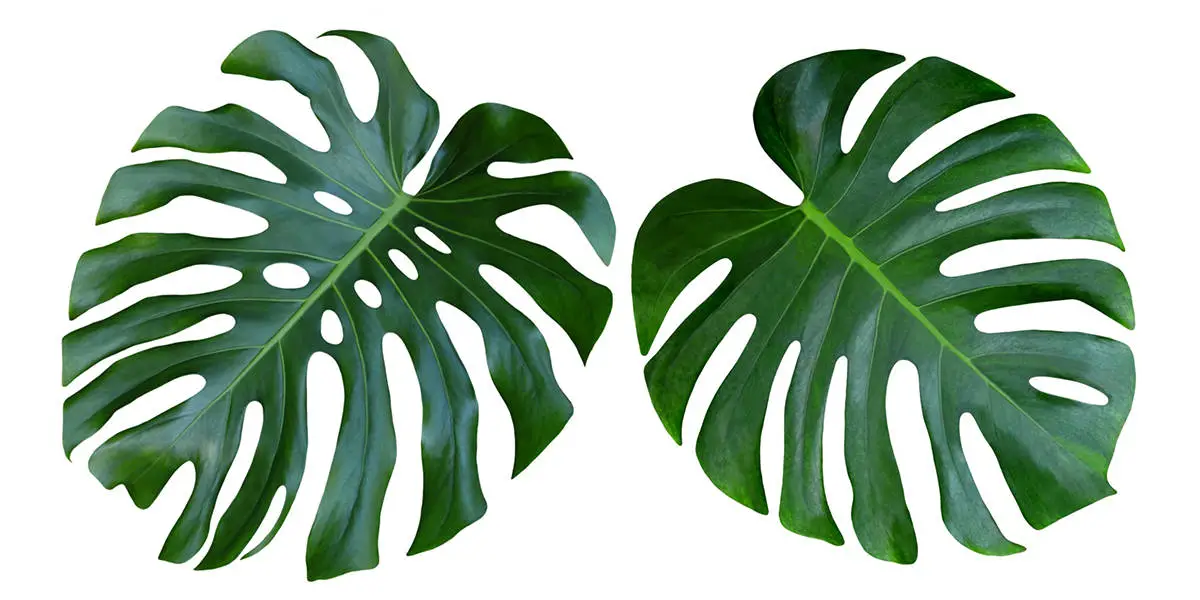
Monstera deliciosa plants are easily recognized by their large, glossy leaves. The leaves boast a unique characteristic: they have natural splits or holes. Botanically, these are called fenestrations. As the plant matures, the number of splits increases.
Why do the leaves have holes? It’s not a disease or damage. It’s a natural adaptation. The holes allow light to pass through to the lower leaves in dense rainforests.
The leaves of these plants are heart-shaped when young. They develop their distinctive splits as they grow. These leaf modifications mean there’s more to Monstera deliciosa than its charming aesthetic.
Your Monstera’s leaves will start with a solid form. As it ages, they gain more splits. Leaf size can be impressive, reaching up to three feet long in the right conditions.
Rapid Growth Under Optimal Conditions
When you provide your Monstera deliciosa with the right conditions, it can grow at a remarkable rate. Optimal growth conditions include a mix of dappled sunlight or partial shade, as well as rich, well-draining soil with high organic matter. In such environments, the Monstera can expand its lush foliage significantly, sometimes up to 2-6 hours of direct sunlight a day is ideal.
Watering is a key factor in promoting rapid growth. Ensure adequate moisture while avoiding waterlogged soil. Regular fertilization during the growing season also supports its quick development. Under these conditions, your Monstera can thrive, potentially growing its iconic split leaves to a width of up to 36 inches.
Proper spacing is crucial for your Monstera’s growth. This plant requires ample room to expand, with recommendations suggesting an available space of 6 to 12 feet to accommodate its size over time.
Climbing Nature
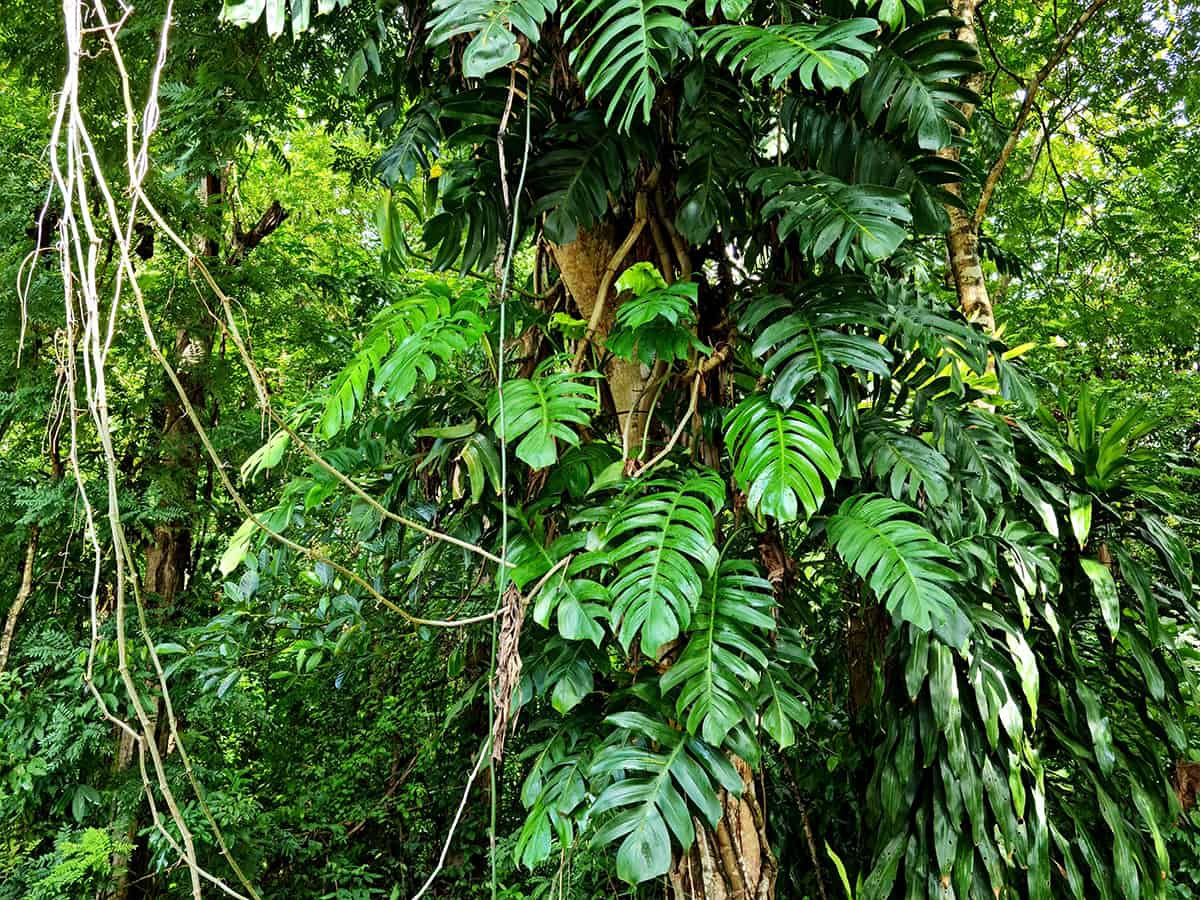
The Monstera deliciosa thrives as a climbing plant. In its natural habitat, it scales tall trees. Indoors, you can mimic this with a stake or pole. Its aerial roots grip onto supports, allowing upward growth.
Your Monstera may not climb to the 70 feet it reaches in the wild, yet a support enables it to grow taller than its typical 6 to 8 feet indoor limit. Provide a sturdy support structure to accommodate its growth habit.
Aerial roots are key for climbing. They’ll attach to rough surfaces, absorbing moisture and nutrients. To help your Monstera climb, guide its aerial roots toward the support.
Air Purifying Qualities
Monstera plants possess air-purifying qualities that benefit your home environment. They are included in the list of plants that NASA studied for air purification. Monstera can remove pollutants like formaldehyde from indoor air.
Monsters absorb these chemicals mainly through their leaves. Keep your Monstera healthy for optimal air purification.
Easy Propagation
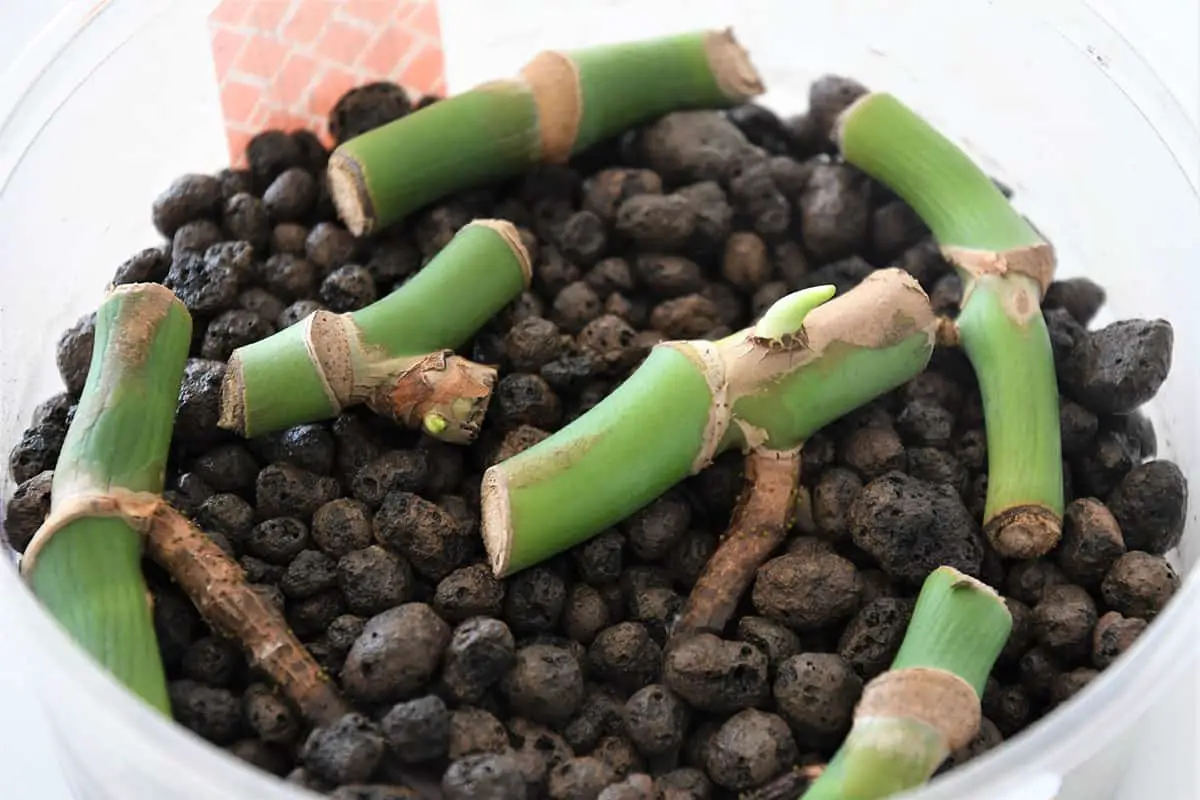
Monstera deliciosa, a favorite houseplant, is remarkably easy to propagate. You have three simple methods: stem cuttings, air layering, or division. Stem cuttings require a node, the point where leaves emerge, to ensure new growth. With a node, roots will form, and a new plant will develop.
Air layering involves wrapping damp moss around a stem while still attached to the parent plant. Once the roots appear, you can cut and pot it. Division, on the other hand, involves separating a portion of the plant at the root level. Each piece must include at least one node.
When choosing the water method, change the water weekly to prevent rot. For soil propagation, use a well-draining mix and keep it moist. With proper care, you’ll soon have a new Monstera plant thriving in your space.
Variegated Varieties Are Highly Prized
Monstera lovers often seek variegated varieties for their unique beauty. These plants feature leaves with stunning white or yellow patches. Monstera deliciosa ‘Thai Constellation’ and ‘Albo Borsigiana’ are examples. Their striking patterns are due to chlorophyll mutations.
You’ll notice these varieties can be more expensive. It’s because they’re harder to propagate. These Monsteras have less chlorophyll in the variegated sections, which can affect growth rates.
Edible Fruit Bearing
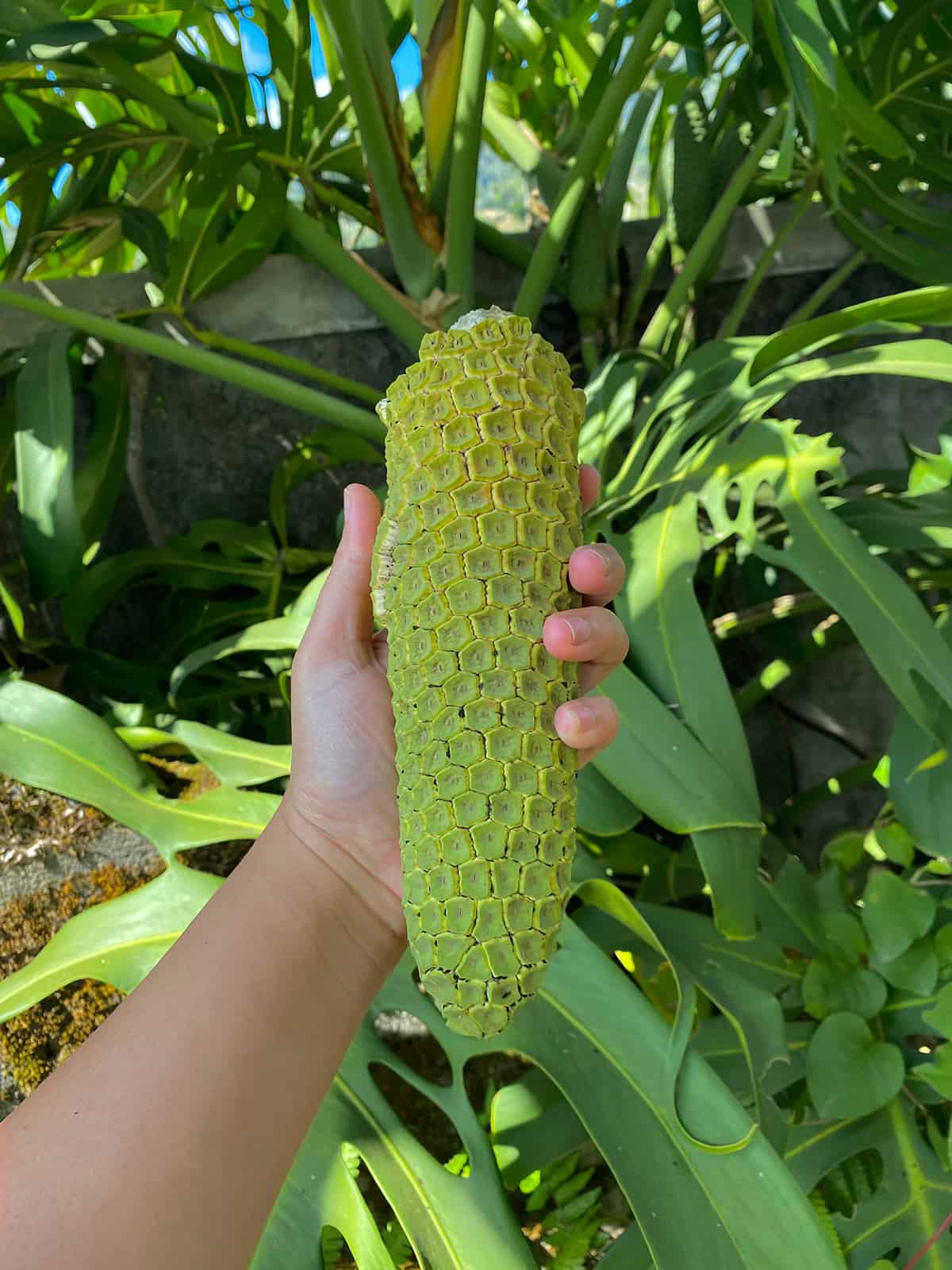
The Monstera deliciosa yields a unique fruit that sets this plant apart from common greenery. Their fruits come with distinct appearance and edibility. When ripe, the fruit offers flavors reminiscent of various tropical fruits.
| Stage of Ripeness | Description |
|---|---|
| Unripe | Toxic and not safe to consume. |
| Ripe | Sweet taste, similar to banana and pineapple. |
Your Monstera will need around one year to fully ripen its fruits. Ripe Monstera fruit is easy to recognize. The green scales covering its surface fall away naturally. At this stage, it’s safe to enjoy the fruit, which is described as a mix between jackfruit and pineapple.
To grow a Monstera with fruitful results, begin with a healthy nursery plant. Nursery-grown Monsteras are usually sold in containers and span 2 to 4 feet in length. Proper planting contributes to successful fruit-bearing.
Long Lifespan
Monstera plants boast a long lifespan. You might find it surprising, but with proper care, these leafy beauties can thrive for decades. Their resilience is remarkable, allowing them to grow and adapt over many years.
To ensure optimal growth and longevity, it is crucial to provide consistent care. This means regular watering, adequate light, and the right soil mix. Your Monstera can become a long-standing feature in your space.
Remember, these are tropical plants. They originate from rainforests, needing a humid environment to simulate their natural habitat. Investing in a humidifier can help maintain the moisture they love.
Symbolism In Art And Culture
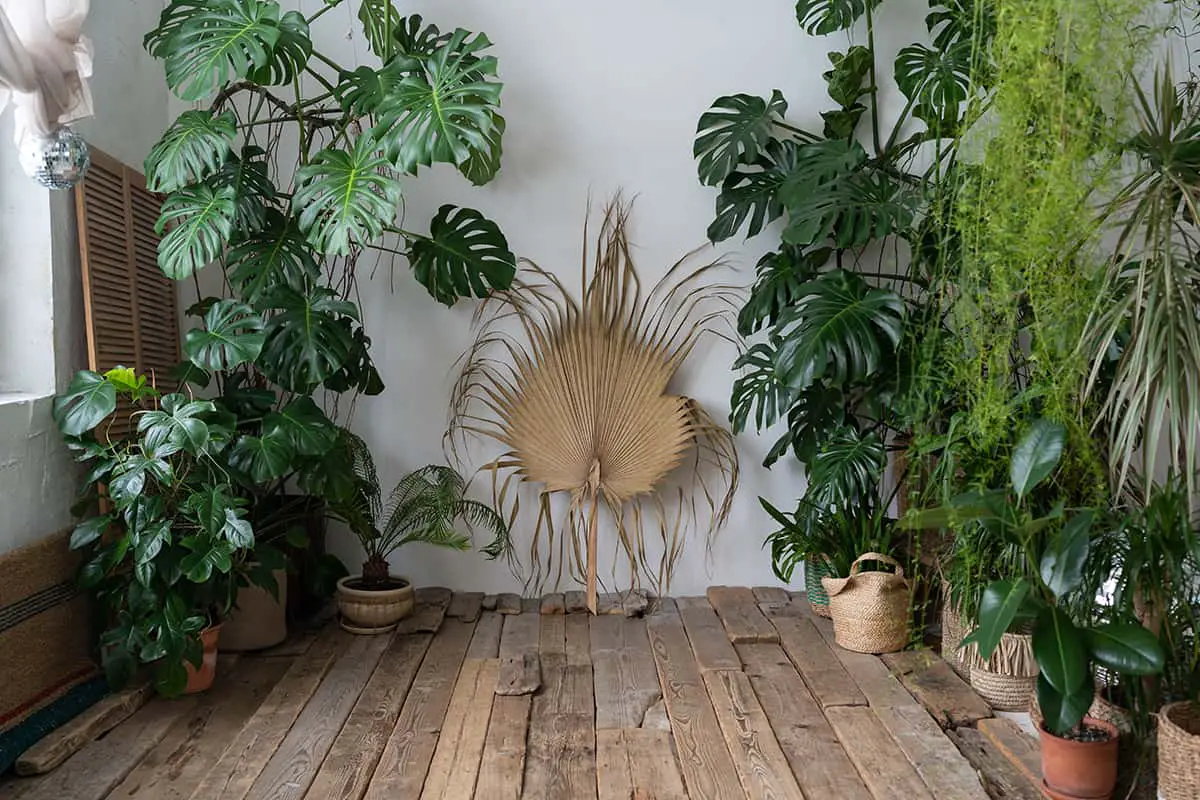
Monstera plants are more than popular houseplants with distinctive split leaves; they carry a wealth of symbolism in art and culture. Artists and designers use Monstera to signify the exotic, tropics, and lushness. Its image serves as more than a simple decoration; it’s a symbol of longevity and respect in some cultures.
In your living room or a gallery, when you see a Monstera, it may represent growth and expansion due to the plant’s tendency to spread outwards. It’s often interpreted as a sign of a person’s desire to grow and push beyond their boundaries. In modern visuals and motifs, the Monstera leaf has become iconic, frequently representing nature in urban life.
Monstera leaves also appear in cultural events and are used as decorations in celebrations. They are a flair of nature in human festivities, bridging our living spaces with the natural world. In some artistic expressions, they can symbolize hospitality, welcoming guests by integrating nature’s serene beauty into human interactions.
Wide Range Of Species
The Monstera genus encompasses a diverse group of plants. You may recognize the Monstera deliciosa for its iconic split leaves. Beyond this popular species, there are varieties like the Monstera adansonii, with its charming hole-filled leaves, and the Monstera obliqua, which is rarer and more delicate.
Within the Monstera family, you’ll find plants with varying leaf sizes, shapes, and patterns. The Monstera siltepecana exhibits a stunning silvery-blue hue on its foliage. The Monstera pinnatipartita features deep divisions in the leaves as it matures. These variations reflect the adaptability of the Monstera genus to different environments.
When looking to add a Monstera to your collection, consider the environment you can provide. Each species has unique care requirements, though most prefer indirect light and moisture-retaining soil.
Tolerance For Low Light
Monstera plants adapt well to low-light conditions. This makes them suited for areas of your home that don’t receive much natural sunlight. While they thrive in bright, indirect light, growth in a shadier spot won’t harm your Monstera significantly.
You’ll notice slower growth if your Monstera doesn’t get enough light. However, it will still maintain its lush appearance. The dark green, heart-shaped leaves may grow less frequently, but they can still develop their signature splits and holes.
It’s a good practice to position your Monstera in a spot where it can bask in filtered light, steering clear of direct sunlight to prevent the leaves from scorching. To encourage even growth, rotating the plant occasionally is beneficial, ensuring all sides receive adequate light.
Enhancing your Monstera’s tolerance to low light involves a few careful steps. Regularly dusting the leaves can maximize light absorption, making it crucial for maintaining the plant’s health. If natural light in your space is insufficient, considering a grow light can provide your Monstera with the necessary illumination for its growth.
Additionally, allowing the soil to dry out slightly between waterings is vital to prevent root rot, ensuring your plant stays healthy and vibrant.
Requires High Humidity
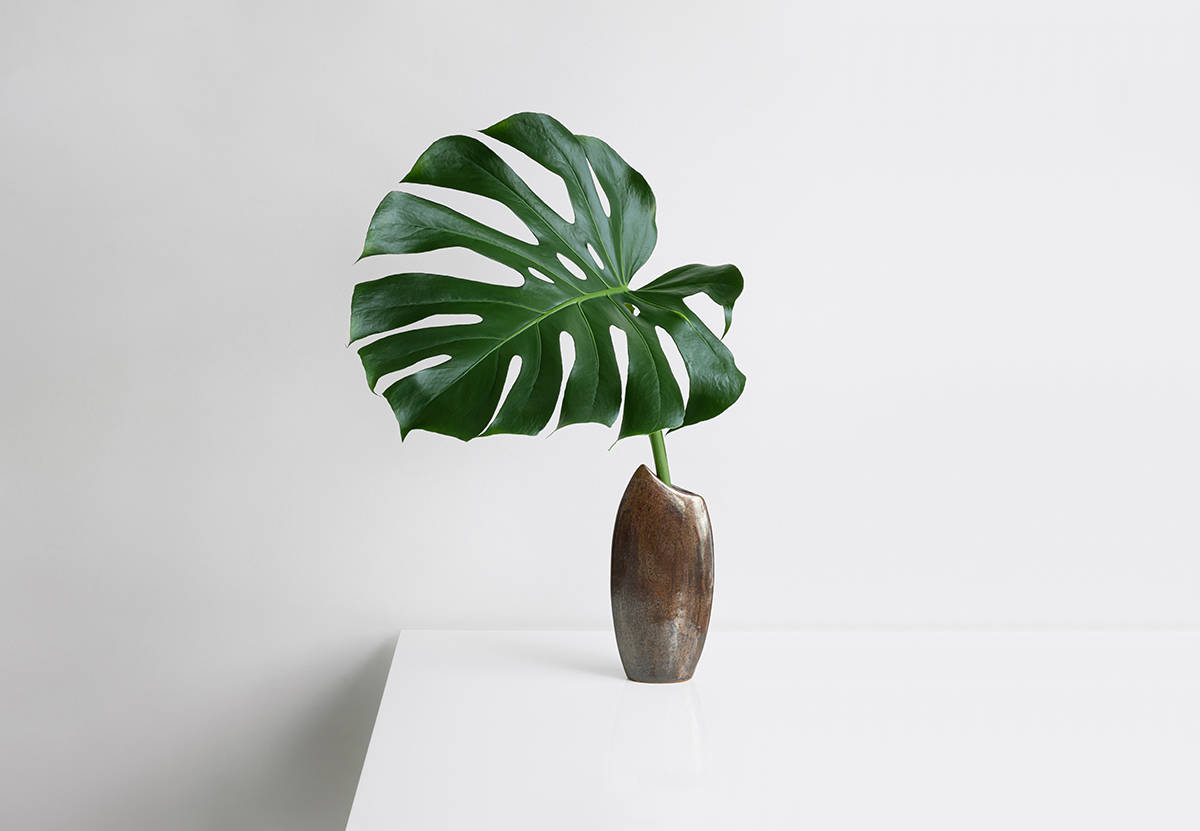
Monstera plants require high humidity to thrive. These tropical natives do best when the air is moist. You’ll want to maintain a consistent environment to keep your Monstera healthy.
Humidity Levels:
- Ideal: 60% or above
- Minimum: 50%
If you live in a dry climate, you might find it challenging to maintain these levels. Consider using a humidifier to increase the moisture in the air. Another option is to group your plants together or place a tray of water near them to naturally boost humidity levels.
To check if your Monstera is getting enough humidity, observe its leaves. Curled or brown leaf edges may indicate that the air is too dry. Ensure your Monstera is not placed near heating vents or air conditioners as these can reduce humidity.
A Subject Of Scientific Study
Monstera deliciosa serves as a focal point for interesting botanical research. This plant has gained attention for its adaptive growth, making it a robust subject for examining plant behavior in different environments. Researchers study its aerial roots which help it climb and offer support. The large, perforated leaves are another area of study, with scientists looking at how these adaptations benefit the plant in its natural habitat.
Your understanding of Monstera deliciosa deepens when acknowledging its role in academia. The plant’s ability to grow large leaves is of particular interest when exploring leaf development and genetics. These features capture the attention of researchers aiming to understand the plant’s natural growth patterns.
Scientists have also explored Monstera’s indoor air purification qualities. You benefit from this plant beyond its aesthetic value, as it can improve your indoor environment. The Monstera contributes to healthier indoor air by removing certain pollutants, a fact supported by studies.
